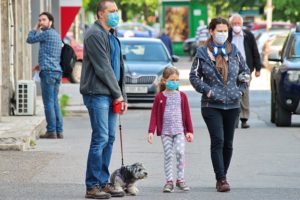Study coordinated by the Italian Society of Environmental Medicine, in collaboration with the Faculty of Medicine of the Complutense University of Madrid and the University of Sannio

Rome, 29 August 2022 – Published in the magazine Environmental Research a new international research conducted by the Italian Society of Environmental Medicine (SIMA) on the issue of the spread of Covid-19 based on atmospheric pollution and the extension of urban and peri-urban green areas.
“The research, coordinated by SIMA in collaboration with the Faculty of Medicine of the prestigious Complutense University of Madrid and the University of Sannio, shows the different impacts in terms of infections, hospitalizations and mortality that Covid has produced in the different territories depending on the ‘intensity of atmospheric pollution and the extension of green areas, constituting further proof that the environment directly and significantly affects our state of health ”, explains SIMA president Alessandro Miani.
Thanks to a powerful bilateral study on georeferenced data, SIMA was able to analyze the association between incidence, hospitalizations or deaths due to Covid-19 and the extension of public green areas in 10 Italian cities and 8 Spanish provinces with more than 500,000 inhabitants (for Italy Rome, Bologna, Catania, Florence, Genoa, Milan, Naples, Palermo, Turin and Venice; for Spain Madrid, Barcelona, Valencia, Seville, Zaragoza, Malaga, Las Palmas and Bilbao).
Net of the different contagion dynamics linked to population density, the results of the study show how the impact of Covid in terms of infections, hospitalizations and deaths was lower in those cities that boast a greater extension of public parks and lower average concentrations PM2.5 per year.
Based on the data processed by the Italian Society of Environmental Medicine through the study and referring to 2021, an increase of one km2 of urban green areas per 100,000 inhabitants corresponds to about 68 fewer infections among the population, 1 hospitalization saved and 115 deaths avoided. The effect of atmospheric pollution is even more pronounced, where an increase of 1 microgram per cubic meter of PM2.5 per 100,000 inhabitants corresponds to 367 more infections, 2 hospitalizations and even 796 avoidable deaths.
This is further confirmation of the link between the severity of the pandemic and environmental factors such as the availability of green areas and local air pollution.
It is prof. Andrea Falco, professor of statistics in Madrid and SIMA Spain Delegate to illustrate in detail the methods used for the analysis of Italian and Spanish data: “Two different methodologies were applied: a bottom-up approach is for Spanish institutional data relating to infections / hospitalizations / deaths and the extension of public green areas. For Italy, a top-down approach was used, starting from the official data of infections / hospitalizations / deaths of each province and linking them to OECD statistics on the extension of public parks in the various areas “.
“Linear and generalized models were used for the statistical analyzes that also included PM2.5 in a multivariate approach (with annual average concentrations coming from the official air quality monitoring stations) taking into account the different number of inhabitants of each province – continues prof. Falco – The results obtained for Spain are consistent with those observed for Italy, as for both countries a statistically significant association clearly emerged between the trend of the Covid-19 pandemic and the extension of public parks, as well as and for the average annual concentrations of PM2.5 “.
“The accumulation of evidence of this type should be highly regarded by decision makers because it proves that increasing green surfaces and reducing the load of atmospheric pollutants represents a strategy that can also make a difference in terms of public health compared to current and future threats to human and planetary health ”, concludes the SIMA president, Alessandro Miani.
